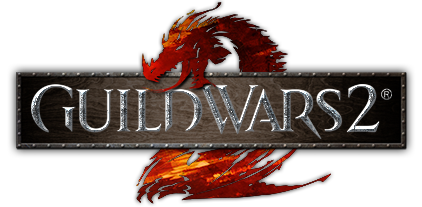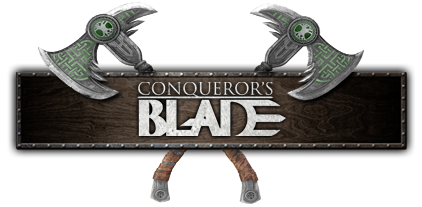Group Types And Warband Components
By: Eirynn
This is an effort to explore optimal group types for conducting multi-warband raids. This paper assumes the following: first, the Gaiscioch Trinity consists of three full warbands; second, the players of the appropriate classes and specs are available; third, there is an enemy presence of approximately equal size that necessitates this sort of coordination; fourth, the warband is closed and all group leaders within the warband are versed in these tactics. This paper is a thinking exercise, meant to theorize on the best possible scenario, but acknowledges that with open warbands, conflicting interests (dominating the enemy to force them from the field vs. farming them for RP’s and having fun for a few hours), and lack of practice, that “best possible†scenario may never be realized.
Warband Breakdown
With three warbands, the warbands would be broken down into three distinct roles. The main warband, lead by the raid leader, would be the core warband, made up of a large number of line elements (tanks and their healers) with ranged support. They would have the role of establishing a line of combat, to make both the attacker and defender more “static†so the enemy can be more rapidly picked apart. In keep raids, the main warband would be primarily concerned with taking down the door and leading the charge against the keep lord.
The second warband would be the flank guard. They would have heavy crowd control and ranged combat elements, primarily designed to block and control enemy movement to prevent them from reaching our healers and ranged DPS. Several classes have at least one spec that excels at knockdowns, knockbacks, and/or roots, making this one of the more open-ended warbands in terms of what types of characters would go into it. In keep raids, they would be primarily concerned with guarding the postern doors to prevent enemy elements from getting into the keep.
The third warband would be the flanking warband. They would consist of a mix of ranged support and flanking groups, and would be primarily concerned with isolating and destroying specific elements of the enemy army (healers and ranged DPS). In keep raids, their ranged components would deal with enemy siege equipment (especially the Oil) while their melee components would patrol the front of the keep to intercept enemy reinforcements.
The Core Warband
The job of the Core Warband is to create a line of combat. This is accomplished through a combination of components. First, defensively specced tanks (Knight, Swordmaster, and Ironbreaker)are required, in order to provide the durability necessary to establish the line. Second, healers that do well on the front line are required… this means Rune Priests and Warrior Priests, especially those with group heals to counteract AoE’s. Third, AoE specced Ranged DPS are required, especially those with ground target AoEs (like Bright Wizards). Ground Target AoE’s can help define the combat area by creating “borders†which players will naturally wish to avoid, funneling them into the kill zone where other AoE DPS can begin mowing them down in large numbers.
The breakdown of the Core Warband is to have two to three “tank†groups, each made up of four tanks and two healers, with the remaining groups being artillery groups, each consisting of five ranged DPS and a healer. If there aren’t enough healers to go around, a healer can be sacrificed from one of the tank groups to ensure that each of the groups has at least one healer, because self-inflicted explosions kill more bright wizards than the enemy does.
The Core Warband also has three “officersâ€. The first officer is the raid leader, in charge of communicating to commands to his warband, and relaying the next target to the raid as a whole. The second officer is the communications officer, who keeps in contact with the Flanking Warband leader and non-trinity warbands, and tells them when and from where to launch their attacks. The third officer is the artillery officer, who calls out his target to the warband’s ranged DPS and is set as the main assist for the warband.
It’s the responsibility of the Core warband to take down the keep door in keep raids… thus, members are encouraged to carry a ram on them at all times. During keep raids, the artillery groups of the Core warband will concentrate first on taking out the oil, then on sweeping the walls for defenders, and finally on blasting the keep door. They do this by having a main assist , and having that main assist call out “New Target Acquired >>> [NAME]†(I’ll put the macro for that up later today), then hitting the target with a coordinated (within a second or two of each other) burst of AoE’s from all artillery groups in the warband. This helps ensure the target has no time between shots to heal, and the same for those around them. The same applies to taking down the oil, as this can also kill those who are busy trying to repair/use the oil.
In Keep Defense, the Core Warband’s job is somewhat divided. The Artillery groups should be on the walls, hitting the Ram and all those around it with AoE’s. At higher levels, This can largely be accomplished through ground target AoE’s, keeping the player somewhat protected from retaliation. The healers for the Artillery groups are encouraged to use altitude to their advantage, resurrecting group members to the upper levels of the keep, and healing them from there as well. This allows them to have line of sight to their group without being within range of the attackers on ground level, and also ensures they’re out of harm’s way in the initial lord rush so that they can continue to resurrect defenders.
The Tank groups of the Core Warband will be primarily concerned with blocking the ramp to the lord room, with a few of them operating siege equipment. Those operating siege equipment should call themselves out ahead of time, so the artillery group healers can res them, as the tank group healers will be inside to heal/res the ramp defenders.
The Flank Guard Warband
The job of the Flank Guard Warband is to guard the flanks of the force from attackers, creating a sort of “U†shaped box formation with healers/artillery groups on the inside, CC classes and damage-specced tanks forming the struts of the “Uâ€, and the Core Warband’s line elements forming the base of the “Uâ€. The enemy then engages the base of the â€Uâ€, with the struts extending away from the enemy.
The warband’s composition is primarily of Crowd Control specced classes. Most classes have a Crowd Control spec, or a spec that provides more crowd control than the class would normally have access to, at least, which makes this a very open warband. In addition, this warband is the least reliant on discipline in open-field RvR, as their job is to mingle with the inherent chaos of people slipping around and through the line elements to prevent them from reaching the healers. A Flank Guard warband consists of 2-3 CC groups, with the remainder being made up of ranged support groups. Obviously, each group needs at least one healer, though no healer is particularly well or poorly suited for this task (as far as I know… I actually don’t know a lot about Archmages and Warrior Priests beyond Tier 1 and 2).
In Open Field RvR, the task is very simple: protect the healers, kill anything that gets past the line, and look out for incoming enemies. It’s a simple but very essential role, and one that should make the flank guard anything but boring.
In Keep Raids, the Flank Guard does become a little more boring… their job is to guard the postern and prevent enemy reinforcements from entering the keep. This makes the best use of their crowd control abilities, although it can seem “not as fun†as hitting the keep door with your sword, especially when no enemy reinforcements show up. However, it’s an essential function, and one that the warband is well suited to accomplish. The best setup for this is to have the ranged combat elements located somewhat near the door, with the CC elements deployed to either side of them. This layered defense gives more chances to slow/stop the enemy reinforcements, while giving the ranged components flexibility to provide support in either direction. Unfortunately, this also puts the ranged components at risk, as the enemy’s reinforcements can flood outside through the postern and disrupt them long enough to slip reinforcements through.
In Keep Defense, the Flank Guard gets the fun job of fighting against the enemy postern guards. This is accomplished in waves, by having the healers resurrect those that die outside the keep, and letting them run back down to the Postern to go again. Wave 1 is a CC wave… someone with an area effect CC ability goes through first to disrupt the enemy warband, then the rest of the warbands (except the healers, of course). They do as much damage as they can, concentrating on taking out the enemy postern guard’s healers, then get res’d and go again. In this manner, they can hopefully keep the Postern Guard sufficiently thin as to allow reinforcements to get into the keep.
The Flanking Warband
The job of the Flanking Warband is to hamstring the enemy army and prevent them from continuing combat, primarily by taking out the healers. They’re comprised of highly mobile elements specced to take out single targets or multiple lightly armored targets. The Flanking Warband is composed of 2 to 3 flanking groups, each consisting of 4-5 melee DPS classes (Slayers, White Lions, Witch Hunters) and the remainder mobile healers (Rune Priests and Archmages), and the remaining groups consisting of ranged DPS (especially single-target spec) and their healers (again, Rune Priests and Archmages).
The Flanking Warband will have to be somewhat geographically separate from the main warband as a necessity, which will require a warband leader with some knowledge of the terrain in the area, and a good sense of direction. Because this third warband has to be separate enough from the main force to be able to surprise the enemy, it’s the last warband to be filled up. This ensures that the majority of the force is concentrated in the same area, so it can resist the enemy’s attacks and maintain the lines of battle long enough for the flank warband to reach the fight and turn the battle.
In open field RvR, the Flank Warband has to rely heavily on communication with the Core Warband, generally through leader to leader communications. They communicate directly to the “communications officer†of the Core Warband, allowing the communications officer to concentrate on coordinating with the flanking warband without overtasking the raid leader.
During Keep raids, the Flanking Warband’s range elements will support the artillery groups of the Core warband in destroying enemy siege equipment. Once the siege equipment is destroyed, they will set up a picket to the rear of the door force to warn of/intercept enemy reinforcements.
During Keep Defense, the range elements will focus on taking down the enemy ram, while the melee elements guard the postern. Healers of the ranged elements will be stationed on the upper tier of the Keep to res/heal without being in range of the enemy, while healers of the melee elements will be stationed on the ramp. Once the door gets to 20%, the postern guard will abdicate their positions and pull back to the second-level outer towers, where they can then drop down on the postern from the outside once the push into the Lord’s room has started, and enter the keep en masse to take out the ground-level healing support of the enemy.















